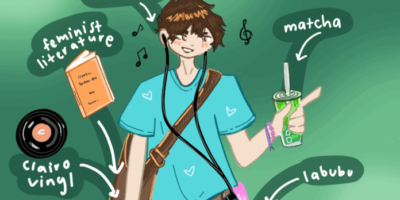It used to be that stalking was creepy, and if you met a girl at a party and only got her name you probably wouldn’t find her again. Just over ten years ago, that changed. All it took was one restless Harvard University student looking to redeem himself and to poke a little fun at the school at the same time. What he did was create an online directory that was seemingly on steroids. “I think it’s kind of silly that it would take the University a couple of years to get around to it,” Zuckerberg said about Harvard creating a school wide online directory which had been widely discussed at the time. “I can do it better than they can, and I can do it in a week.” Not only did it allow students with Harvard emails to upload pictures and contact information, but it also allowed them to interact with one another. Students could easily find classmates, or perhaps find that person who is a friend of a friend, whose name you can never remember.
Facebook changed the nature of the web and how we interact with each other. It has become a place where we keep in touch with people by perusing their profiles or seeing posts related to them on our news feeds instead of talking or emailing them in person. This can make in-person meetings a little awkward as we ask about events that were never mentioned to us before. Facebook is not a platform for strangers. It is interesting because it allows people who already know each other or are in the same community, be it school, town, hobbies or even just extended friend circles, to stay in touch like never before. That being said, Facebook doesn’t introduce us to new people, so if we grow bored of following our friends and acquaintances we may have to go outside and meet new people for ourselves.
As co-op students relocating every 4 months, there is no shortage of new people to meet, though it is always nice to see some familiar Waterloo faces. For a very long time Waterloo students on co-op have participated in something called WatPub. Initially it was just a certain pub that students would go to on a specific day of the week, as the internet got more common a mailing list was also added, and today Watpub is on Facebook. So what is the difference between the Watpub of today and the pre-internet Watpub? Today it is much more flexible. People can post pictures of places to rent, of adventures around their co-op home town. Spontaneous adventures can ensue from posts like “Who’s down for bungee jumping?” or “I heard there are some cool caves, anyone want to check them out on Saturday?” or “I just got some tickets for this event I can’t attend”
Watpub isn’t always the easiest to connect to, since the co-op advisers don’t always administer the Facebook group. It is also a closed group. Some people fall through the cracks and don’t end up in the group. On my first co-op, I was up north in an area where there were only 7 other co-op students. We didn’t have a Watpub group, and I only met one other Waterloo co-op student. It wasn’t until almost a year later that I discovered that Facebook has two inboxes, one for people you are friends with or have friends in common with and another ‘spam’ type inbox. Two of the co-ops I never met had actually emailed me at the beginning of the co-op. I really enjoyed my co-op, it was the summer and I met a lot of interesting people, but it goes to show how Facebook can present issues with connecting everyone. The old Watpub simply required the co-op advisers to let you know the meeting place and day, and the rest was up to you. Years later, alumni could go back to those pubs and meet current co-op students.
Facebook and other social media have contributed to more spontaneous group meetings. So that’s great, right? We are seeing each other in person rather than being sequestered behind our computer screens. See, parents, we aren’t cyborgs yet! That is all well and good as a social network among big groups. When it gets really personal, the rules change. It can be tough to get over a past relationship if the two of you have lots of mutual friends constantly posting pictures that you can morosely go over at 1a.m. That person is constantly at your finger tips. At any time you can give in to your desire for contact and reach out, only to regret it the next morning.
Social media continues to grow and change. The dating scene has been drastically redone by social media. The app Tinder takes the guessing out of asking someone out. Tied to the location of the user, the app provides pictures of people in their proximity. Users can then swipe the photo to the right when interested or swipe left when not interested, and if both users are interested, they will get a notification. Does this diminish the connection or simply unite people who might otherwise not have met each other? The effects will probably not truly be seen for a couple of years.
So much has changed in 10 years, what will the future bring?




Leave a Reply